Ibercaja Romareda
| Capacity | 43 110 |
|---|---|
| Country | Spain |
| City | Zaragoza |
| Clubs | Real Zaragoza |
| Category | Design being implemented |
| Cost | €140 M ($145 M) |
| Construction | 2024–2027 |
| Other names | Nueva Romareda |
| Design | IDOM |
| Contractor | OHLA, Altuna y Uria |
Advertisement
Ibercaja Romareda – design description
How does the design of the new La Romareda look in a nutshell?
The first plans for a new stadium for Real Zaragoza began to emerge as early as the turn of the 20th century, but various political bargains, as well as the financial crisis, thwarted more and more new projects.
The breakthrough came only in connection with Spain's candidacy (along with Portugal and Morocco) to host the 2030 World Cup. Zaragoza decided to seize the opportunity to receive World Cup matches, so another design was created, and after the bid proved victorious, funds were found for its implementation.
The new facility is to be built to replace the old La Romareda stadium. The stadium will be a football-specific facility with a capacity of more than 43,000 spectators, equipped with the latest technology and meeting all conditions for hosting top-level events.
The designers, inspired by the cool northerly winds blowing in the area (the so-called cierzo), have given the rectangular body a bit of dynamism, using subtle convexities and concaves. The building will be covered by a lightweight roof, which will shield not only the entire auditorium, but also the observation deck located at the top.
Construction work began in July 2024, but until the summer of 2025, it was limited in scope, involving the demolition of the stand behind the south goal and the buildings adjacent to the stadium. Throughout the 2024/25 season, the stadium remained open, with matches played in front of three open stands.
After the 2024/25 season, Real Zaragoza moved to a temporary stadium, and demolition of the three remaining stands began at La Romareda. The new facility is scheduled to be ready in mid-2027 – according to a sponsorship agreement signed on July 1, 2025, it will be called Ibercaja Romareda until 2035.
How have plans for the new La Romareda been shaping up?
How did the old La Romareda stadium look like?
La Romareda Stadium was built between 1956 and 1957, and after investments in the 1970s and 1980s, the facility was expanded to its final form. At the end of the 20th century, the last standing places were eliminated (installation of seats).
The facility had a rectangular, football-specific layout, with a slightly curved stands behind the goals. Behind the corners, four lighting masts were set up. The upper parts of the stands were covered, and the capacity of the venue was more than 33,000 spectators. In the 21st century, the facility was considered outdated and in need of comprehensive renovation.
The stadium belonged to the city and was rented by the football club Real Zaragoza, which hosted it from the very beginning. Since moving to La Romareda, Real has played almost exclusively in the Primera División, only after relegation in 2013 came an extended period of playing in the second division.
The stadium hosted matches in the 1982 World Cup and the 1992 Olympic football tournament, played host to three Copa del Rey finals, and occasionally hosted the Spanish national team. In addition, the facility has been an arena for music concerts.
In connection with the construction of the new La Romareda, the old stadium was scheduled for complete demolition. In the summer of 2024, when work began, the stand behind the south goal was demolished, but the other stands remained in use for the entire 2024/25 season. After the end of that season, demolition of the remaining stands began to make way for the new venue.
What were the previous plans to build a new stadium for Real Zaragoza?
A bid to host Euro 2004
At the end of the 20th century, Spain was in the race to host Euro 2004, with La Romareda among the 15 stadiums put forward as a candidate. On January 20, 1999, a UEFA delegation visited the Zaragoza stadium and found it to be non-compliant (similar objections also applied to Estadio de Balaídos in Vigo).
At the time, the city council promised that if Spain was selected, a new facility would be built in Zaragoza, which would be financed through the sale of the plot of land with the old stadium. In October 1999, however, UEFA chose Portugal's bid, and the new stadium in Zaragoza was not proceeded with.
2002: Ricardo Bofill
More concrete plans to build a new La Romareda emerged during José Atarés' term as mayor (alcalde) of Zaragoza (2000–2003). Atarés announced the construction of the new stadium just a few months after his election, in September 2000.
An architectural competition was announced, which was decided in December 2002. The winning concept was created by the design office of Catalan architect Ricardo Bofill. The stadium was to hold 42,000 spectators and cost €47 million.
The facility was planned to be built in the southwestern suburb of Valdespartera. The project was to be financed through the sale of the existing stadium, which was to be replaced by nearly a thousand new apartments.
The project was the subject of political wrangling, with the PP and PAR parties in favor of it, while the PSOE and CHA were opposed. In the summer of 2003, after local elections, the opposition proved too strong and the project collapsed.
The design of Real Zaragoza's new stadium by Ricardo Bofill can be seen on a separate subpage
2004: Estudio Lamela
The new mayor, Juan Alberto Belloch, was also in favor of construction, but the stadium was to be built on the site of the old La Romareda. A new architectural competition was held, the results of which were announced in December 2004, and the winner was Estudio Lamela from Madrid.
The new stadium was to receive covered, two-tiered stands with a capacity of 42,600 spectators, with an extensive glass-enclosed VIP area to the west. The design featured an angular body and numerous commercial areas on the first floor. As an option, a tall building with offices, a hotel and stores was to be built along the main stand.
The concession for construction was awarded to a consortium of Sacyr and Acciona. A construction schedule was drawn up: preliminary work was to begin on April 17, 2006 and go into full swing after the season ended; the new facility was to be ready in March 2008, still before the inauguration of Expo 2008.
However, on April 17, 2006, the day that workers were already beginning preliminary work, the court, as a precautionary measure, ordered a halt to all activities in connection with appeals against the stadium's construction.
Perhaps not coincidentally, the petitions were filed by the PAR and PP parties, the same ones that had been blocked by the opposition from moving forward with the previous stadium project. In 2007, the court upheld the appeals and canceled the construction contract, so the project was abandoned.
The design of Real Zaragoza's new stadium by Estudio Lamela can be seen on a separate subpage
2008: Joaquín Sicilia
After the failure of the previous project, on February 1, 2008, the city council decided to build a new stadium in a different location, in the southeastern suburb of San José. Another competition was held, which was won in July 2008 by a studio led by Zaragoza-based architect Joaquín Sicilia.
The vision looked very spectacular. The stadium was to be built in the form of a rounded block, resistant to the strong winds (cierzo) blowing in the area. The facility would be enhanced with extensive commercial facilities, with an Andalusian patio at its center. Illuminated at night, the facade would be covered with perforated panels with mudéjar-style ornaments.
The stadium was to hold 43,000 people, with the possibility of expanding with additional mobile stands, up to a capacity of 50,000 spectators. The possibility of building new apartments next to it was also assumed. The cost of building the stadium was estimated at €125 million. Work was originally scheduled to begin in 2009, but the investment was halted by the global financial crisis.
The project was also part of Spain and Portugal's bid to host the 2018 World Cup, but on December 2, 2010 the candidacy lost out to Russia's bid. After that, the subject of building a new stadium went quiet and was eventually abandoned.
The design of Real Zaragoza's new stadium by Sicilia y Asociados Arquitectura can be seen on a separate subpage
How was the current design for the new La Romareda created?
What prompted the resumption of work on plans for a new stadium for Real Zaragoza?
The issue of a new stadium has resurfaced in connection with Spain's candidacy to (co)host the 2030 World Cup. The city authorities have partnered with renowned architecture studio IDOM and in June 2022 announced that Zaragoza would be one of the candidate cities in Spain's bid.
On July 14, 2022, the Spanish Football Federation officially presented the 15 stadiums proposed for the World Cup, from among which it was assumed that 11 venues would ultimately be selected. Among the 15 candidates was the (new) La Romareda.
The new stadium was intended to be built on the site of the old La Romareda, but other locations were also considered before a final decision was made.
How was it initially intended to bring about the construction of a new stadium for Real Zaragoza?
In early 2023, the city granted a 75-year lease for La Romareda. Real Zaragoza had been seeking such approval for years; it was intended to allow them to invest significantly in the facility with private investors. It had previously been estimated that the new stadium would cost less than €140 million to build, but it should also generate €14.7 million in profits annually, so such an investment was expected to be profitable for the club.
To make the process transparent, the lease was to be awarded through an open competition, but it was apparent that Real would be the only interested party. What's important, if the 75-year lease was granted, the new stadium was to be built solely with private funds.
Meanwhile, in April 2023, the Podemos party challenged the legality of the entire undertaking, taking the appeal to court. The Podemos party's motion caused the club to drop its application for a 75-year lease in September 2023.
When was the latest design for the new La Romareda created?
IDOM presented an architectural concept for the new La Romareda back in May 2023. However, since the club in September 2023 withdrew its efforts for a long-term lease, the project once again stalled.
What was the ultimate impetus for building a new La Romareda?
FIFA then came to the rescue, announcing on October 4, 2023 that Spain had been awarded the 2030 World Cup (along with Morocco and Portugal, as well as three South American countries, which are to host only one game each at the start of the tournament: Argentina, Uruguay and Paraguay).
Faced with the very real prospect of bringing World Cup matches to Zaragoza, the local authorities sprang into action. The matter seemed fairly obvious: if the new stadium is built, the city will almost certainly be one of the hosts of the tournament, while without a new venue there is no chance of that.
As late as the end of October 2023, the city authorities and the Autonomous Community of Aragon, together with Real Zaragoza, agreed to jointly finance the construction of a new stadium. On December 21, 2023, the three entities formed a company called La Nueva Romareda SL, which would handle the construction and subsequent management of the new facility.
The club's contribution to the construction of the stadium will be partially covered by a loan obtained through an agreement between LaLiga and the CVC Capital Partners fund.
Will Zaragoza host the 2030 World Cup matches?
Thanks to the steps taken, there were no problems in granting Zaragoza the status of one of the host cities of the 2030 World Cup. In July 2024, when the so-called “bid book” was published, the new La Romareda was among the 11 venues from Spain; the choice of a Zaragoza stadium was also confirmed in December 2024, when FIFA finally approved Spain, Portugal and Morocco to host the event.
The new La Romareda is tentatively scheduled to host matches up to the Round of 16 during the 2030 World Cup.
When was the plan to build a temporary stadium for Real Zaragoza conceived?
Initially, it was assumed that the new stadium would be built between 2024 and 2028, and that the work would be done in stages, stand by stand, so that it would be possible for Real Zaragoza to continuously play matches at the same site.
In the spring of 2024, however, the idea of building a temporary stadium, to which the club would move for the duration of the reconstruction in order to speed up the whole process, was born. In the end, it was this “plan B” that was decided upon.
The construction of the temporary stadium took place between January and July 2025. The venue is intended to serve Real Zaragoza for two seasons (2025/26 and 2026/27), during which the full-scale construction of the new La Romareda will be carried out. This follows an initial phase that began in the summer of 2024 and continued throughout the 2024/25 season.
The temporary stadium, named “Ibercaja Estadio”, was built in the northern part of the city, on the site of the Parking Norte de la Expo, next to the Corona de Aragón athletics stadium. The venue can accommodate just over 20,000 spectators and features, among other things, floodlights and a large video screen.
A full presentation of Real Zaragoza’s temporary stadium is available on a separate subpage
How is the construction of the new La Romareda going?
A report on the construction of the new La Romareda can be seen on a separate subpage
Construction of the new La Romareda began in July 2024, but during the first season, work was limited and only concerned the south stand and the demolition of buildings surrounding the stadium. It was not until the summer of 2025, thanks to Real's move to a temporary stadium, that construction began in full swing. The new stadium is scheduled to be completed in June 2027.
When was construction of the new La Romareda inaugurated?
On July 8, 2024, a special press conference was held at the stadium with the participation of the city's mayor, Natalia Chueca, among others, officially inaugurating the construction of the new stadium.
What was done during the first year of construction of the new La Romareda?
In the first year, the investment was limited in scope. The stand behind the south goal (Gol Sur) was demolished, and preliminary work was carried out on the construction of a new stand in its place. The other three stands remained open to fans, and Real continued to play their matches at the old stadium throughout the 2024/25 season.
At the beginning of the construction, two buildings adjacent to La Romareda were also demolished. It was not until December 2024, after the preliminary work had already begun, that the contractor for the main part of the investment was selected.
What was the initial period of construction of the new La Romareda in detail?
In the summer of 2024, the old stand behind the south goal was demolished. In its place, the foundations for the new stand and its underground floors began to be built – this work continued throughout the 2024/25 season.
At the beginning of the work, two buildings adjacent to the stadium were also demolished: the headquarters of the Aragon Chamber of Accounts, which was adjacent to the main stand, and the urban planning board building, standing near the southwest corner (the so-called “Cubo”).
The work, which lasted for the first half of the 2024/25 season, was carried out by the OHLA-Deltapunt 3000 consortium. The tender for the main part of the work was announced in September 2024, and was awarded on December 13, 2024, with the winner being the OHLA and Altuna y Uria consortium.
What will the main part of the construction work on the new La Romareda look like?
After the end of the 2024/25 season, when Real moved to a temporary stadium, work began in full swing. In June 2025, demolition of the remaining parts of the old stadium (the west, north, and east stands) began to make way for the construction of new stands. The new stadium is scheduled to be completed in June 2027, so that Real can play there from the start of the 2027/28 season.
How much is it expected to cost to build the new La Romareda?
The main contractor offered a bid of €124.5 million, about 10% lower than the city's target, so that the cost of the entire project could be less than €140 million (not counting the costs associated with the temporary stadium, which will amount to an additional several million), although at the start of the work €151 million was expected to be spent.
What are the assumptions behind the design of the new La Romareda?
The basic premise of the plan is to build a completely new stadium to replace Real Zaragoza's current facility, La Romareda. The project was developed by the internationally renowned studio IDOM, with César Azcárate as chief architect.
The new stadium, like its predecessor, will have a football-specific character. The capacity of the new venue will be 43,110 spectators (compared to 33,600 in the old stadium).
The stands will be divided into two tiers, with a lower floor situated below ground level. Along the pitch, between the two tiers there will be additional narrow balconies with VIP seating and a presidential box.
The facility will be equipped with extensive utility facilities, and the main stand will receive five floors above ground and two underground. The stadium will include a club store and a museum.
The designers, inspired by the cool northerly winds blowing in the area (known as the cierzo), have given the rectangular building some dynamism, using gentle convexities and concaves. The building will be covered by a lightweight roof, which will shield not only the entire auditorium, but also the observation deck located at the top. The dominant colors in the stadium are to be Real Zaragoza's club colors, blue and white.
The stadium will be equipped with the latest technology and will be designed to host football matches and cultural events at the highest level. The facility is to become a new showcase not only for the club, but also for the city and the entire region.
What will the new Real Zaragoza stadium be called?
During the planning stage and the initial phase of construction in the 2024/25 season, the project was referred to as Nueva Romareda (New Romareda – in reference to the name of the old stadium, La Romareda).
On July 1, 2025, La Nueva Romareda SL signed a 10-year agreement for the naming rights to the stadium with Ibercaja, a bank based in Zaragoza. Under the agreement, the facility will be called Ibercaja Romareda until 2035.
The agreement also includes the naming rights for the temporary stadium where Real Zaragoza will play during the construction of the new stadium between 2025 and 2027 – it will be called Ibercaja Estadio.
Advertisement
Renderings
Related news
2025
-
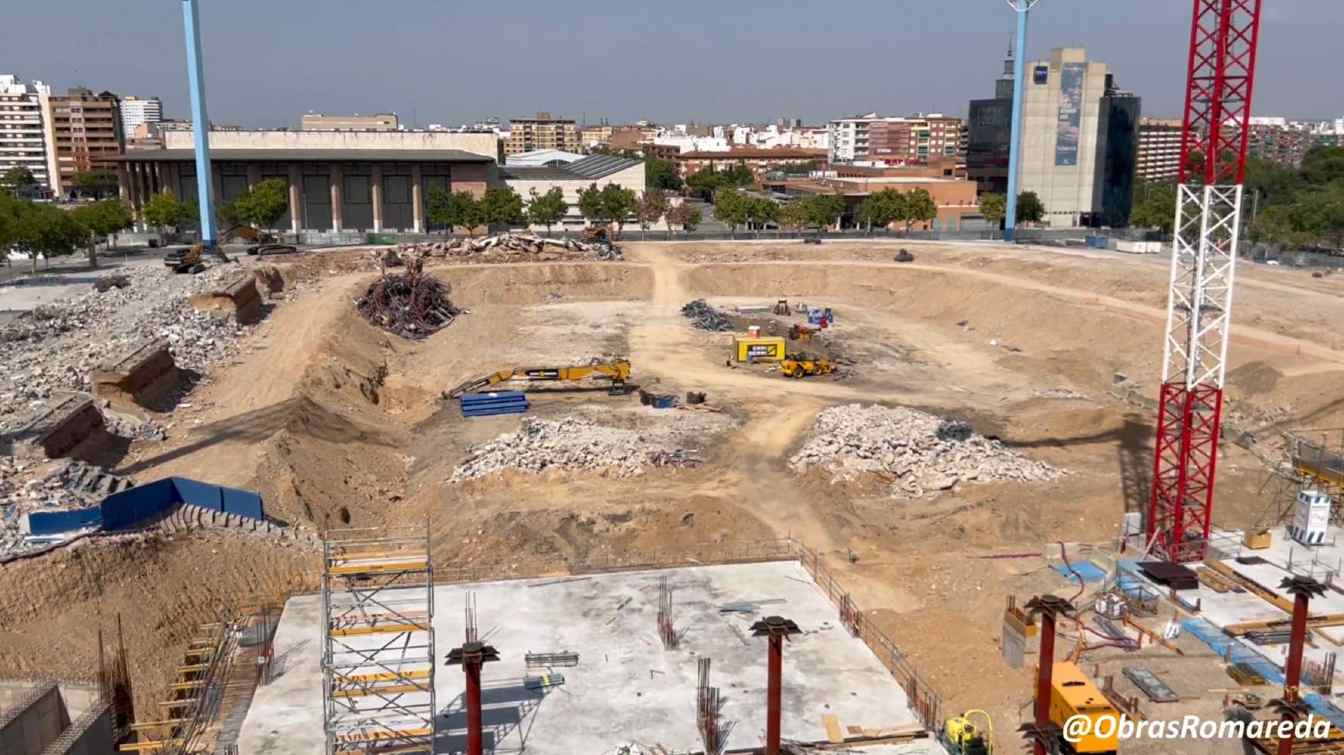
Spain: Lamp posts, the only thing left of the old Romareda
All that remains of the magical nights at La Romareda after its 68 years of history are the memories of the fans and the poles that used to light up the pitch. The demolition work is nearing completion, outpacing the work calendar by two weeks.
-
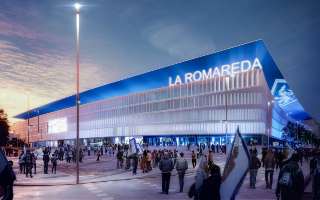
Spain: Ibercaja Bank will put name both Romaredas
The Aragonese bank has won the race to name Real Zaragoza's two stadiums: both the New Romareda and the Mini Romareda, the modular stadium and provisional home of the 'Blanquillo' team. Meanwhile, the demolition of the old stadium is entering a key phase.
-
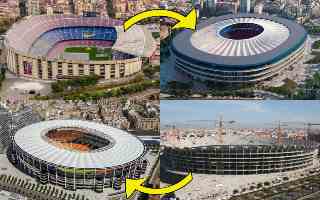
Spain: Dynamically evolving Spanish stadiums
A revolution is taking place in Spanish football stadiums. The latest video on the EstadiosDB channel, available in Spanish, takes viewers on a journey through arenas that have undergone profound transformations in recent years—not always spectacular, but always meaningful. From modest modernisations to major rebuilds, each stadium tells its own story.
-

Spain: Costly naming rights for Real Zaragoza’s new stadium
Will Romareda soon change its name? That remains to be seen, but one thing is clear – the new Real Zaragoza stadium has the potential to generate significant income for its owners. The stadium’s managing company has officially begun preparations for selling naming rights.
-
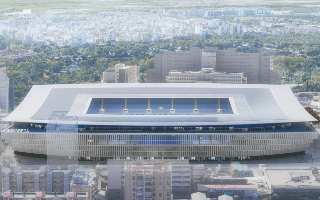
Spain: New Romareda, new source of revenue
Fans have already bid farewell to the 'old' Romareda, and Real Zaragoza are already starting the move to a temporary stadium. Over the next two years, the historic venue will be razed to the ground and built from scratch, but the authorities are already looking for a title sponsor for the new Romareda to boost revenues.
-
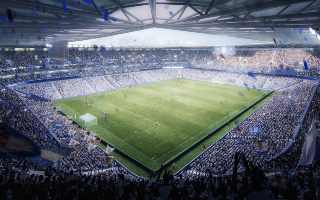
Spain: The second phase of Nueva Romareda construction is about to begin, new tenders launched
The Board of Directors of La Nueva Romareda SL has approved the next stage of construction for the new stadium, as well as the services and supplies for the temporary venue at Parking Norte de la Expo, where work is already in progress.
-
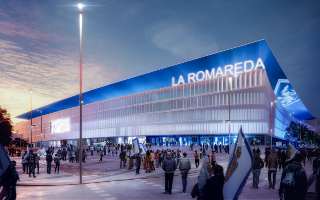
Spain: Second phase of Nueva Romareda construction approved
The second phase of works at the La Romareda stadium has received all the necessary permits. The construction is set to begin in February, starting with the building of the structure for the new Gol Sur stand.
-
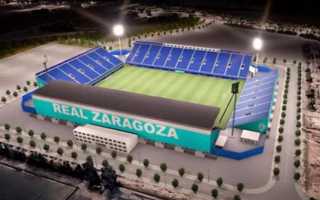
Spain: Work begins on temporary stadium for Real Zaragoza
The urbanisation work to build a portable stadium for Real Zaragoza is fast approaching. The first activities on the construction site are scheduled for this coming Monday, 20 January.
2024
-
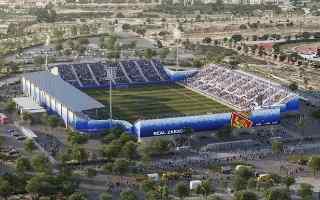
Spain: Modular stadium construction in Zaragoza will begin in early January
Two parking lots, a fan zone, picnic areas, and flood protection—this is how the surroundings of the temporary football stadium at Parking Nord will look, where Real Zaragoza will play for the next two seasons.
-
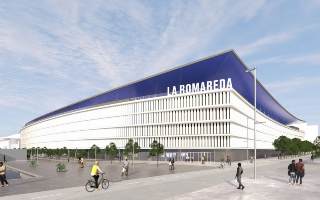
Spain: Construction of Nueva Romareda will take three months less than expected
IDOM, the company responsible for the design, is revealing more and more details about the future stadium in Zaragoza.
-

FIFA: World Cup 2030 stadium evaluation. Camp Nou in the lead
Of the 23 stadiums to host the 2030 World Cup matches, as many as 14 either exist only on paper or will undergo deep redevelopment before the tournament. Nevertheless, FIFA has evaluated each of them before the Extraordinary Congress, which will already make its final decision on December 11. Also the one about the final arena.
-
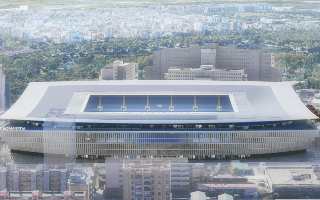
Spain: Construction of Nueva Romareda turns out more expensive than expected
The construction of the Nueva Romareda stadium is set to cost more than initially projected, with an additional €72 million needed from two of the three partners of the La Nueva Romareda SL group to keep the project on track.
-
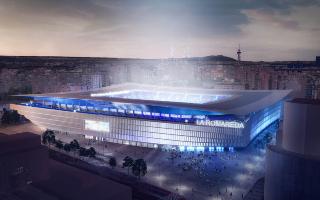
Spain: Four companies interested in construction of Nueva Romareda
Four companies are competing for the continuation of the demolition works of La Romareda and the construction of the new stadium. The board of directors of La Nueva Romareda has approved the proposal for the contracting table. We also know the final deadline for submitting bids for the tender.
-
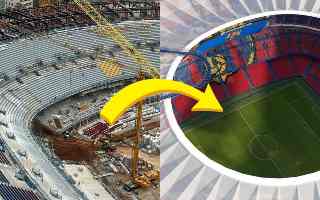
Spain: Wave of stadium upgrades sweeps through the Iberian Peninsula
In recent years, work on Spanish stadiums has not stopped, and the 2030 World Cup has provided another important impetus for the renovation of facilities. With work on the Bernabéu, Camp Nou and Balaídos already underway, 9 La Liga venues are awaiting their turn. Rosaleda, Romareda, Riazor and La Cartuja join the group as 2030 World Cup hosts.
-
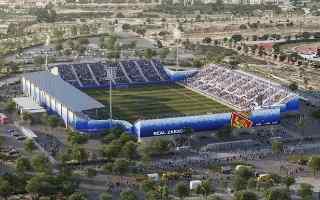
Spain: First renderings of Real Zaragoza's temporary stadium
MLN Group, in a joint venture with Nussli Iberia, which won the tender for the construction of Real Zaragoza's temporary stadium, has revealed the first visualizations of the facility. The stadium will be operational for the 2025/2026 and 2026/2027 seasons.
-
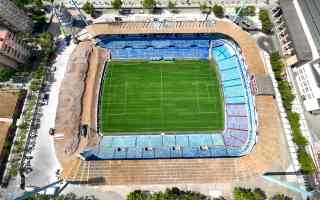
Spain: La Romareda to disappear by mid-October 2025
October 2025. That’s the time when all Zaragoza fans will say goodbye forever to their beloved La Romareda and welcome their new stadium. The company responsible for demolition and construction must ensure that no trace of the current football stadium remains no later than one year after it closes.
-
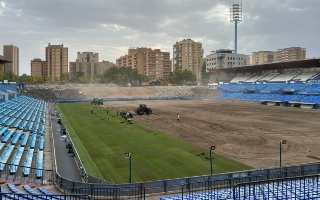
Spain: Tender announced for next phase of Nueva Romareda construction
Nueva Romareda has announced a tender for €138.5 million for a major phase involving the demolition of the current facility and the construction of a new stadium. The public tender will determine the works for Phase 1B.
-
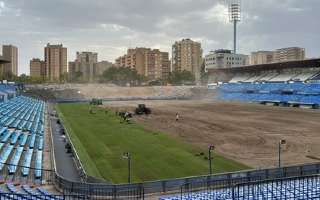
Spain: Two companies interested in building temporary stadium for Real Zaragoza
On September 12, the deadline for submitting bids for the construction of a temporary football pitch for Real Zaragoza at the North Parking lot expired. This temporary facility will be used during the work on La Romareda.
-
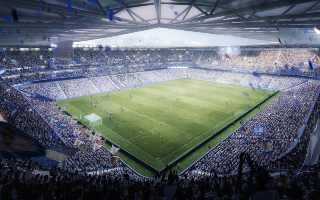
Spain: 'Zaragoza never gives up' banner will cover works at La Romareda
The demolition of La Romareda is progressing at a rapid pace. The work is currently focused on removing the structure of the old El Cubo building, and it is estimated that all surface work will be completed in the coming days. Underground work is set to begin in the second week of September.
-
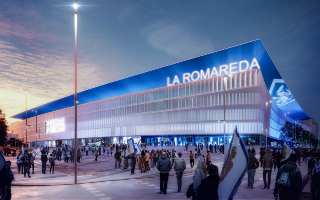
Spain: Real Zaragoza prepares for construction of modular stadium
La Nueva Romareda SL, a company formed by the Aragon government, the City Council, and Real Zaragoza, is adhering to the timeline for the construction of the modular stadium at Parking Norte to ensure its readiness for the 2025/2026 season.
 StadiumDB
StadiumDB






